
In early July 2020, MyOffice released its second major update . In the new version 2020.01.R2, the most notable functional changes have occurred in the tools for working with email and calendar. The optimization of the server components of "MyOffice Mail" was carried out, which led to a 3-fold increase in the speed of sending letters to 500 and more recipients.
Postal system
Starting with this version, a separate administrative web interface appeared in "MyOffice Mail", which allows you to manage the functions of the mail system, configure policies for resource groups and mailings. With the help of this interface, the administration of the mail system is simplified, the implementation of software products at the user's workplaces is accelerated.
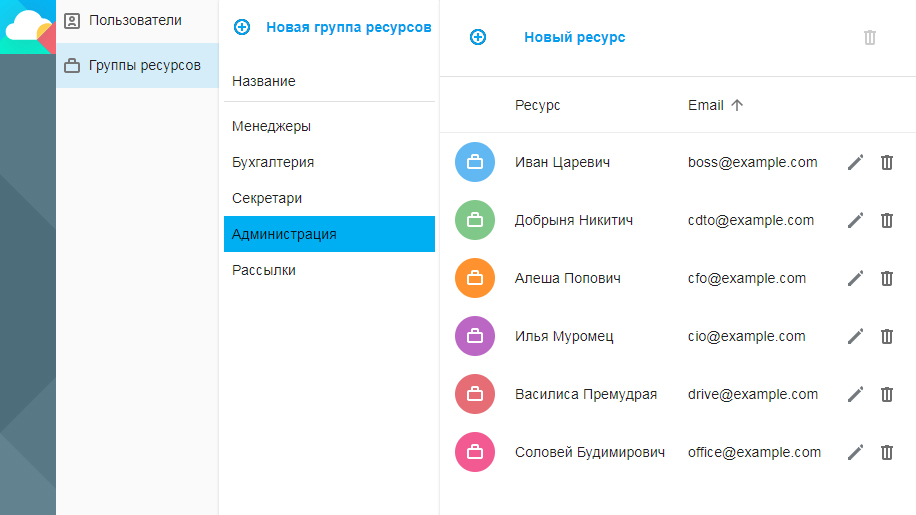
Now administrators can create user accounts, assign roles and form resource groups directly from the browser.
The mail system has also become available to work with templates of automatic responses - administrators can create and independently customize any templates to interact with the company's systems.
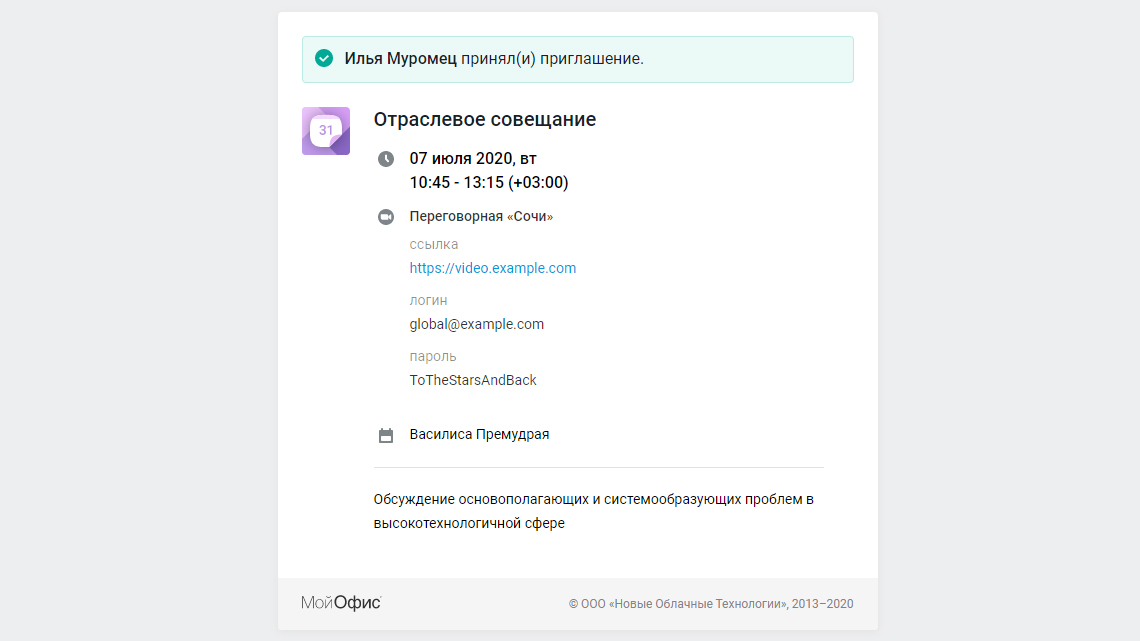
For example, they can be used to change the type of automatic mail sent to recipients when an event occurs, including providing the necessary fields for additional information, such as links to video conferencing sessions and attachments.
Now you can import third-party calendars, users will be able to transfer scheduled appointments from the Microsoft Exchange mail system. This function is especially relevant when migrating from foreign solutions to MyOffice.
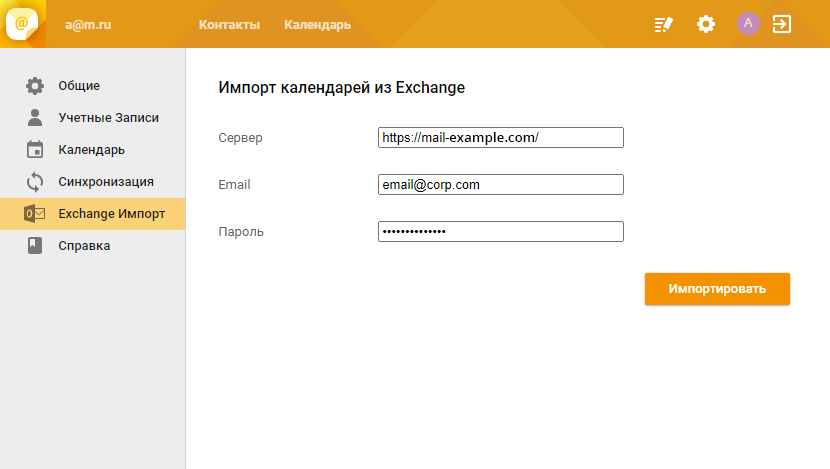
In the new version of MyOffice, the design of the Calendar application has been updated, as well as the appearance of system notifications.
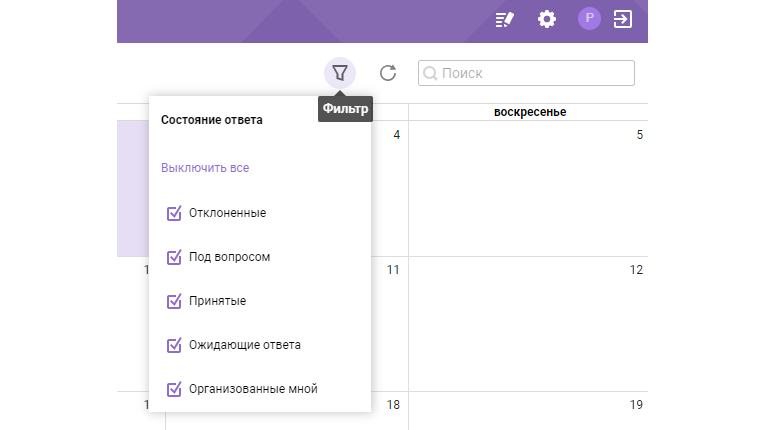
The event editor has also changed - in MyOffice there are advanced settings for repeating events, the
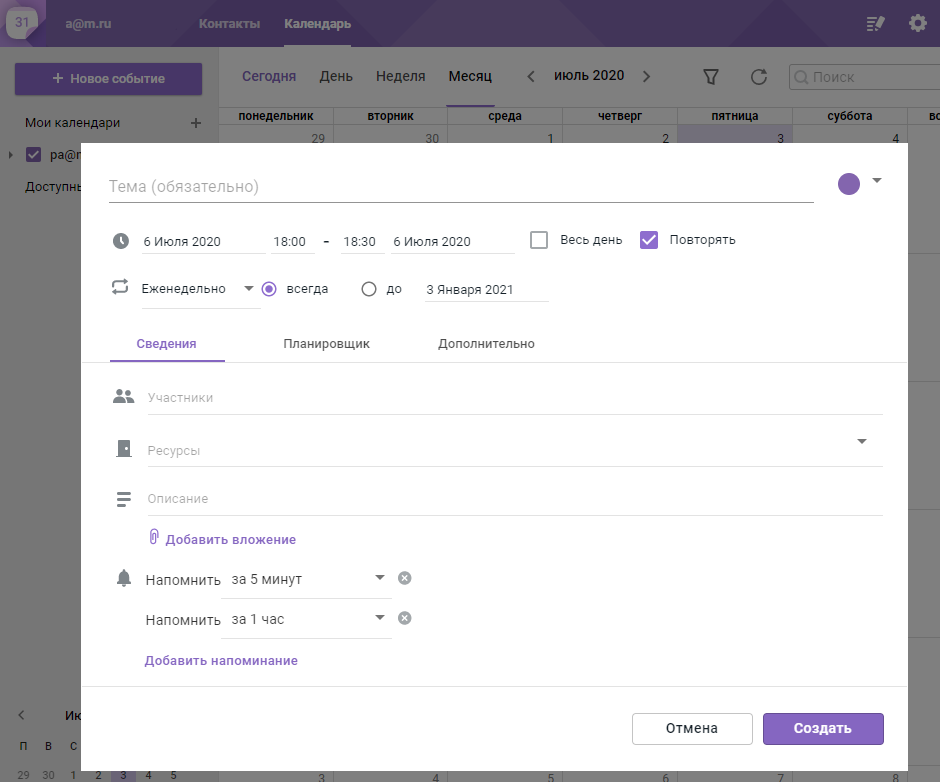
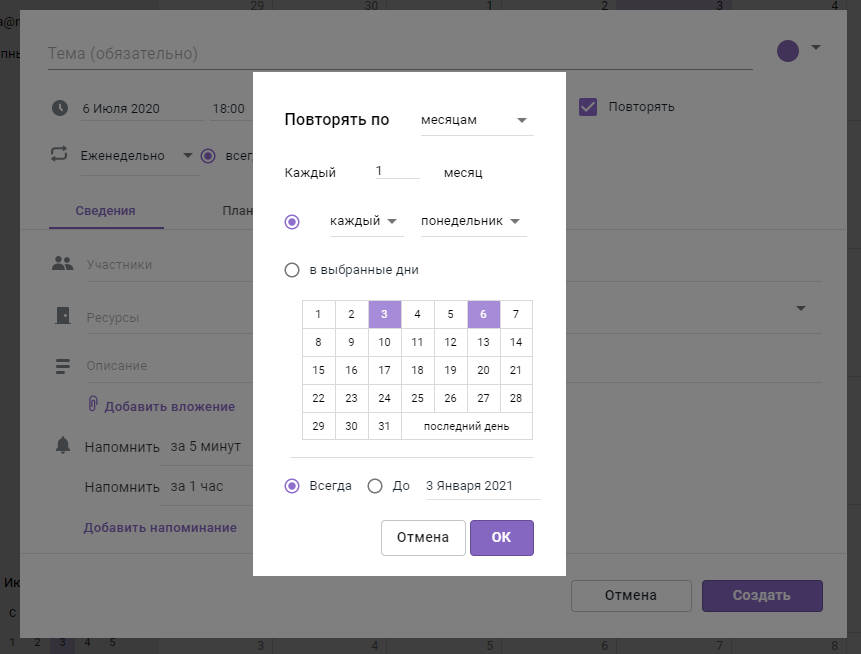
ability to indicate busyness at certain intervals,

View other attendees' busy schedules and help schedule meetings
"MyOffice SDK"
The set of tools for developers "MyOffice SDK" has been replenished with a new component - "Standalone Editing Module" (AMP). This is a special web version of the MyOffice editors, which is designed for integration into third-party products. These applications do not require a separate server and include a full range of editing and formatting features, but they do not have collaboration features. The editor in AMP processes only those files that are transferred to it by the information system - an application or service, where the AMP module itself is integrated.
The "Automatic Editing Module" allows you to add document editing functionality to SaaS services without the need to transfer user data outside the secure perimeter and without the need to deploy additional servers. The new module is available to technology partners under a special ISV license, which is purchased separately.
The MyOffice Document API, another component from the MyOffice SDK, has also been updated. Now users can use functions to work with individual sections of the document and choose portrait or landscape page format.
"MyOffice Text" and "MyOffice Table"
The text editor now has a function for forced clearing of text formatting, which can be invoked via the button on the toolbar or by using the [CTRL] + [SPACEBAR] key combination .
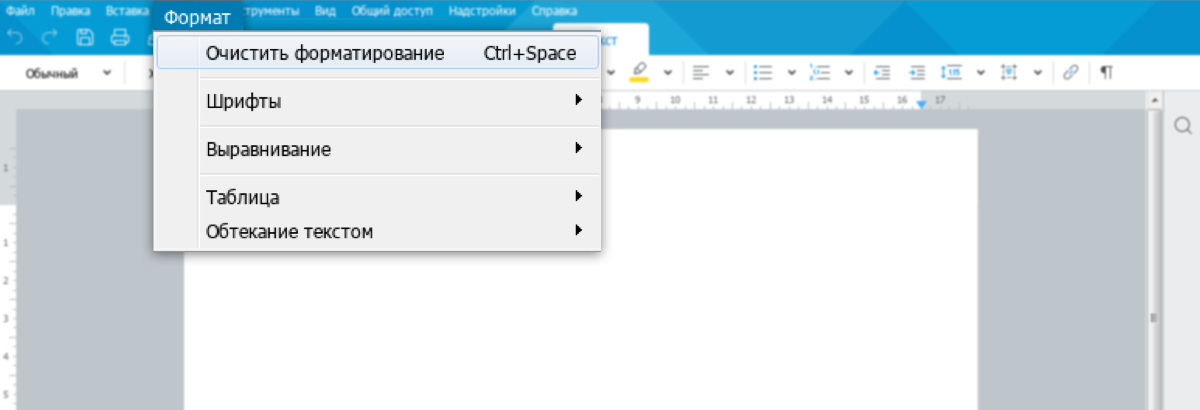
This feature simplifies the layout of documents when copying text from various sources. With its help, the user can reset the formatting settings for a specific paragraph, while maintaining the style settings.
Formatting tools
In the spreadsheet editor, you can now insert values without regard to formatting styles, which is especially important when transferring data from one table to another.

In the spreadsheet editor, users can now choose a number format template in cells. Now it is even easier and more convenient to choose the appropriate style for presenting values in cells.

Basic document template
In the 2020.02.R2 release, it became possible to replace the base template of a new document. By default, only the system administrator can change the base template. This is done so that an ordinary user cannot accidentally change the document settings adopted in the organization. Basic user templates can be stored anywhere - they can be accessed through the [File] - [Create from template] menu item .
Corporate network administrators can distribute both basic and custom templates using centralized computer management tools. This allows, for example, to speed up the transition to new templates when changing branding elements (logo, corporate fonts), changing details or other organization data.
Replacing the basic template of a new document on a separate computer takes several steps:
Start the MyOffice desktop application as an administrator.
Create the required sample template that contains all the necessary information, page layout, and headers and footers.
Select the [File] menu item and then [Save Template ...] . Save the template in the special folder [Default Template] .
The program searches for base templates in standard installation folders, which only administrators have access to. For example, on Windows operating system this folder is located at " C: \ Program Files \ MyOffice \ Default Template ", and on Linux - " / usr / local / bin / my_office".
After the performed actions, when the application starts, a document will be created based on such a template.
Mail client

The design of the mail client "MyOffice Mail" for PC has been updated, it has received a design with a crystal pattern and the ability to display user images (avatars). Previously, this feature was only available in the cloud version of the email client.
Localization tools
Cloud versions of MyOffice are now translated into Belarusian, Kazakh, German and Italian.

PC applications also received French language support. The total number of foreign languages has reached 11 - in addition to the Russian language, the MyOffice interface can also be switched to Tatar, Bashkir, English, Spanish and Portuguese.
Mobile applications
IOS smartphone users can now quickly connect mail, calendar, contacts and global address book profiles using standard operating system applications.

Mobile applications for editing documents now have functions for working with graphic shapes, text comments, and the ability to apply filters in the review panel.